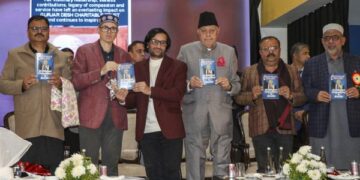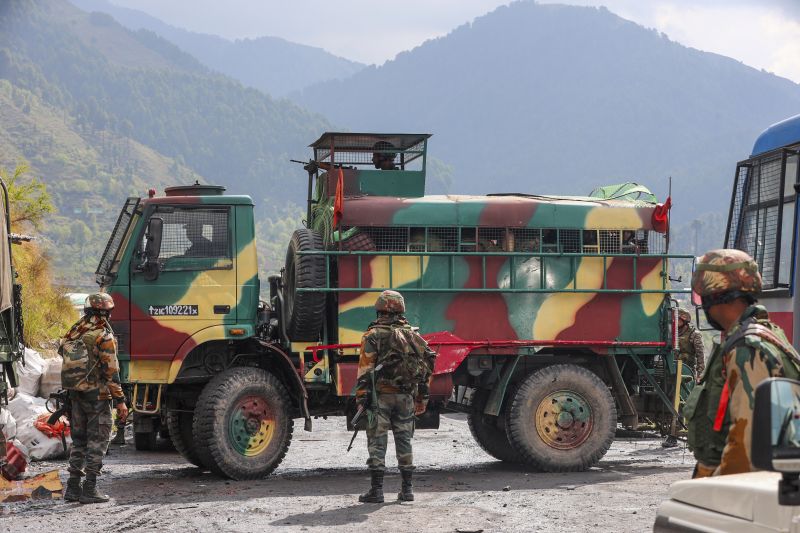New Delhi: A spate of cloudbursts, flash floods and landslides across the Himalayan states of Jammu and Kashmir, Himachal Pradesh and Uttarakhand this monsoon has again laid bare the mountain’s risk to short, violent spells of rain.
It has also shown that seasonal rainfall in the “normal” category may not always signal safety.
The India Meteorological Department’s (IMD) district-wise rainfall data till August 17 this season shows a striking contrast — several districts that saw deadly cloudbursts or flash floods are in the “normal” to “below-normal” rainfall bracket. Examples include Kishtwar and Kathua in Jammu division and Uttarkashi in Uttarakhand.
The IMD classifies rainfall as “large excess” if it is 60 per cent or more above the season’s normal, “excess” if it is between 20 per cent and 59 per cent and “normal” if within 19 per cent. Rainfall that is 20 to 59 per cent below normal is “deficient”, while 60 to 99 per cent below is termed “large deficient”.
Himachal Pradesh has received 613.6 mm of rainfall so far this monsoon, 18 per cent above the Long-Period Average (LPA) of 519.5 mm. Jammu and Kashmir recorded 362.9 mm, 6 per cent below the LPA of 385.2 mm. Uttarakhand received 947.9 mm, 14 per cent above the LPA of 830.1 mm. Despite these variations, all three states fall in the “normal” rainfall category this season.
In Jammu and Kashmir, Kishtwar has received only 86.5 mm of rainfall so far against a normal of 301.5 mm, a shortfall of 71 per cent. Despite this, it has been among the worst-affected this year, with a cloudburst-triggered flash flood on August 14 killing at least 60 people and leaving many missing.
Kathua has recorded 854.6 mm of rainfall so far this monsoon, 5 per cent below the normal of 898.6 mm, but cloudbursts in the Rajbagh and Janglote areas on August 17 caused flash floods and landslides that killed at least seven people and damaged infrastructure, including rail tracks and the Jammu-Kathua highway.
In Reasi district, heavy rains and high water levels in the Chenab river washed away a crucial road patch. Schools were shut across parts of Jammu division amid landslide and flash-flood risk. In Rajouri and Poonch, swollen rivers and streams have led to inundations and landslide damage.
While Reasi recorded 23-per cent surplus rainfall, Poonch recorded slightly above normal and Rajouri gauged 66 per cent of precipitation.
“August is the peak monsoon month; heavy rainfall is not unusual. But with saturated land, deforestation and unstable slopes, even a 50-60 mm downpour can trigger an extreme event,” said Mahesh Palawat, Vice-President, Meteorology and Climate Change, Skymet Weather.
He warned that such inclement weather events will “persist, in fact increase, due to global warming”, while the growing number of unstable glacial lakes adds to downstream flood risks.
Uttarkashi has recorded near-normal seasonal rainfall, around 3 per cent above average. However, on August 5, a cloudburst over the upper Kheer Ganga (Kheer Gad) catchment triggered a debris-laden flash flood that devastated Dharali and the adjoining Harsil area, causing widespread destruction.
Rudraprayag also saw a cloudburst-linked devastation in parts of Kedarghati in late July — houses and vehicles came under debris as rivers swelled. The district has recorded 999.2 mm of rainfall this monsoon season so far, 11 per cent below the normal of 1,125.9 mm.
“The Himalayas are eco-sensitive zones and a distinct pattern is emerging. Average precipitation data alone cannot indicate whether an extreme event is likely,” said Professor Sachchida Nand Tripathi, Dean, Kotak School of Sustainability, IIT-Kanpur.
He said orographic rainfall and partially-melted glaciers have made lakes and water bodies “prone to sudden bursts that can unleash floods”, while improved high-resolution forecasting tools are urgently needed.
In contrast, some districts have seen seasonal excess rainfall without major disasters so far. For example, Dehradun has recorded around 22 per cent excess, Haridwar about 52 per cent and Bageshwar an unusually-high seasonal surplus of nearly 218 per cent as of August 17, according to the IMD’s data.
Multiple cloudbursts, flash floods and landslides have been reported in Mandi and Kullu districts of Himachal Pradesh, which have recorded 69 per cent and 47 per cent above-normal rainfall this monsoon season so far, with the State Emergency Operation Centre reporting hundreds of roads cut off earlier this month.
In Kinnaur, high mountain slopes have remained unstable, with fatal shooting stones reported near Yulla Kanda amid active weather conditions.
On August 16, two tourists from Delhi were killed in one such incident, according to reports.
“It is established that cloudburst or cloudburst-like conditions are increasing in the Himalayan region due to abnormal warming of oceans,” said Kartiki Negi, Lead, Climate Impacts, Climate Trends.
“For every degree rise in temperature, the atmosphere’s capacity to hold moisture increases by 7 per cent. Towering convective clouds, when confined by mountainous terrain, can unleash intense rainfall over a small area in a short period,” she said.
Meteorologically, a cloudburst refers to an extremely intense and hyper-local downpour, defined as more than 100 mm of rain within an hour over an area of 20 to 30 square kilometres. Such events are nearly impossible to predict with precision and can unleash sudden debris flows and flash floods, even when the season’s overall rainfall appears unremarkable.
Steep, fragile slopes, deeply-incised rivers and the orographic lift of moist monsoon winds amplify this risk.
The experts said that district averages smooth out hour-scale spikes that drive disasters. Seasonal totals can remain “normal” even if a single valley suffers a devastating burst that mobilises moraines, talus and glacial or fluvial sediments into debris flows.
In the Himalayas, where and how fast it rains often matters more than how much it rains over three months, they said.
Kishtwar, Kathua and Uttarkashi — all hit by violent, short-lived events despite normal or deficit seasonal tallies — are the latest reminder.






